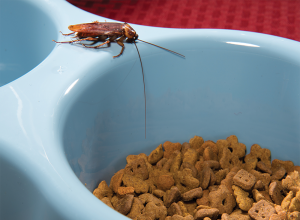START SMALL FOR BIG GAINS: Smart Rodent Technology

Over the last several years the conversation around implementing smart monitoring devices has dominated every pest category in our industry. This is not unusual, after all, people are adopting new time saving and security technologies into their day-to-day home and business routines organically. While all the options for recent technology can be overwhelming, for even the savviest consumers and business owners, the definition of the word technology from the Oxford dictionary is simply “scientific knowledge used in practical ways in industry.” Science and practicality, two factors that beg the pest management professional (PMP) to step back and ask the question, “Does it make sense to keep doing this the same way?”
Smart rodent trap checking for automation
No matter the topic, the practical application of scientific knowledge has been the core of any integrated pest management strategy. Moving towards utilizing modern technology, for the reduction and simplification of previously monotonous and time-intensive work, will become inevitable for every pest control business. Rodent control, often the biggest culprit of a service specialist’s time at an account, can instantly have drastic time savings with the automation of smart rodent trap checking, replacing physically checking hundreds of rodent control devices without activity. In addition to labor time savings, rodent monitoring devices quickly paint a picture of the rodent activity at an account, with affordable smart options including rat and mouse bait stations, multiple catch devices and rodent snap traps.
The move towards incorporating technology, such as smart rodent devices, can be a big step for some companies. Like any new product category, it can make sense to start small, which is often what comes naturally to most consumers anyway. For instance, people tend to start with a smart thermostat or a smart doorbell, prior to jumping in and converting their entire house into full smart-home mode. Smart rodent monitoring technology is no different and sometimes the biggest step to take is spending a few minutes thinking about where to begin. Some questions that can help frame up the best way to start would be to ask your team:
- What is the most time-consuming aspect of rodent control?
- What type of rodent devices (station, multiple catch, snap trap) are deployed most?
- What do you think is the biggest overall issue of our rodent control segment of business?
By asking these questions and then ranking in order of priority, businesses can seek a solution that best fits their organization as it stands today.
Using these same questions, imagine a scenario where a pest control company had the answers shown below:
- What is the most time-consuming aspect of rodent control? Trap checking
- What type of rodent devices (station, multiple catch, snap trap) are deployed most? Snap traps
- What do you think is the biggest overall issue of our rodent control segment of business? Labor shortage
The answer to these brief questions quickly develops into a simple roadmap on where to begin: Focus first on integrating smart rodent snap traps to save meaningful time at each account visit. Getting more hours in the day when labor shortages are happening can be the difference between growing the bottom line or struggling to maintain the status quo. Proving to customers how technology leads to better inspections and allows more time dedicated to other pest problems, is always an easy win for your business.
Figure out the best place for your business to begin using rodent control monitoring technology by starting small and gaining expertise. Reach out to your sales representative today to learn how incorporating a small amount of new technology can lead to significant results.







